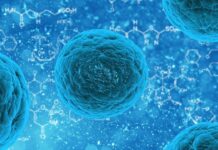When diseases emerge, it can be hard to spot them because the first changes that happen are small. Functional changes at the cellular level are the first to appear, long before changes can be seen at the tissue or organ level.
MRI physicist Hai-Ling Margaret Cheng is looking for ways to refine medical imaging technologies to be able to see these functional changes.
A professor of biomedical engineering at the University of Toronto’s Medicine by Design program, Cheng hopes that her research will lead to earlier diagnoses that allow doctors to treat patients sooner, when more diseases are curable.
“When people develop a tumour, you don’t get a huge lump of tumour right at the outset,” explains Cheng. “What happens is you start to get abnormalities at the cellular level, and these cells start to proliferate or grow out of control. Being able to detect these functional changes in the body is really important because we want to diagnose disease earlier on.”
Once treatment begins, the reverse is also true: recovery begins with small functional changes that can be difficult to monitor with conventional medical imaging. Being able to visualize these changes would allow doctors to adjust treatment plans sooner for patients who are not responding well.
Cheng is also developing technology to look at changes in cardiovascular health, which can cascade into many emerging medical conditions.
“One technology that we have really advanced quite a bit is to look at the health of the tiniest blood vessels in our body. And this is really important because it’s really the tiny blood vessels in our body that control our blood pressure, that control flow,” says Cheng.
“If the control mechanisms for the small vessels in our body aren’t working properly, a lot of problems can start to develop, and we see these in people with diabetes, with hypertension, and even in heart disease.”
Cheng plans to extend this technology to the heart itself, looking for clues outside the heart that can emerge before the heart is affected. She anticipates that these tools could go to clinical trials within the next five years.
Refining medical imaging technology makes the invisible visible. Changing the level of detail that can be seen opens opportunities to chart a new course in healthcare.




































